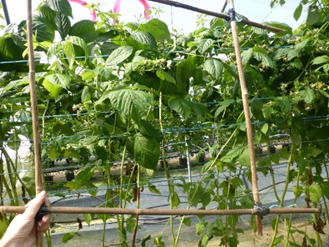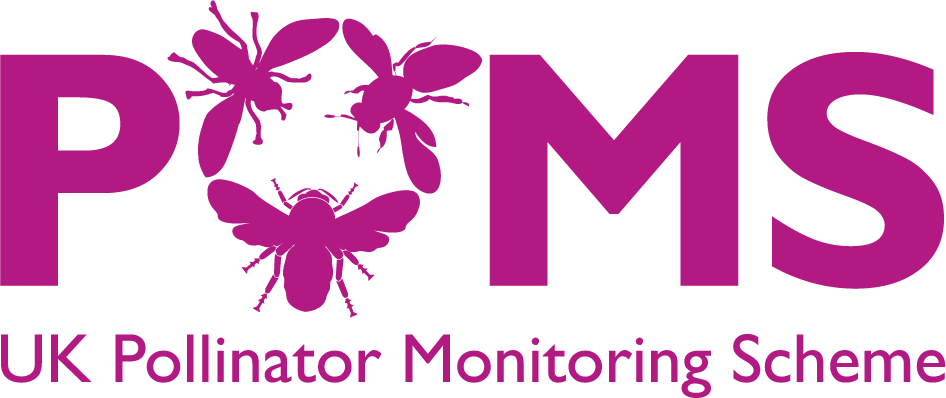FIT counting crops!
Insect pollinators, including bees and flies, provide important ecosystem services including pollinating crops around the world. In the face of potential pollinator declines, pollination of crops could be under threat and it’s critically important to understand which pollinators are pollinating which crops and where. In this blog, Dr Mike Garratt from the University of Reading gives some intriguing insights from a pilot study using the FIT Count app to monitor crop flower visitors in 2021.
Insect pollinators, including bees and flies, provide important ecosystem services including pollinating crops around the world. The UK is no exception and each year insect pollinators contribute around £630M to the UK agricultural sector. In the face of potential pollinator declines, pollination of crops could be under threat and it’s critically important to understand which pollinators are pollinating which crops and where. Such insights help us to understand how pollinators are doing across the UK. Data on crop pollinators can also help farmers manage pollination effectively informing decisions on bringing in managed pollinators such as honeybees to promote crop pollination or creating habitats and adapting management to boost wild pollinators.
In summer 2021, we set out to see if the FIT Count app, designed as part of the UK Pollinator Monitoring Scheme (PoMS) to undertake 10 minute Flower-Insect Timed Count surveys, could help and be used to record insect activity on commercial crops. Focusing on apple orchards in Kent and strawberries and raspberries at farms in Wiltshire and West Sussex (Fig 1) we surveyed pollinators in flowering crops.
|
Figure 1: Target flowering crops |
On warm sunny days in spring and summer, following the PoMS FIT Count protocol, we surveyed the insects visiting the three flowering crops. During 28 FIT counts in different fields and orchards we recorded 565 insects visiting crop flowers. The types of insects we recorded visiting each of the crops were very different. Honeybees were by far the most common flower visitor in raspberries, while in strawberries hoverflies were most common, and in apples we saw different kinds of insects including solitary bees, which our research has shown are important for apple pollination when they are on the wing in spring (Fig 2).
|
Figure 2: The proportion of each insect group counted on the target crops |
It’s great to see so many insects visiting crops and this provides a valuable insight into which insects are likely to be key pollinators for which crops. However, if growers are going to be able to use FIT Counts to assess pollinators on their crops then its important they can get good data quickly – farmers are very busy people. So we also tested doing the 10-minute FIT Counts in three different ways. First, we followed the current protocol exactly focusing surveys on flowers within a 50x50 cm quadrat.

Figure 3: A quadrat held up to a target crop |
Then we also tested two alternative methods which still involved using the FIT Count app, but we tweaked the observation area, first by observing a larger area of crop for each FIT Count and second by doing the pollinator counts on a moving transect of around 50m. During these transects we walked slowly through the crop recording flower visits over the 10-minute FIT Count period. Looking at the data collected, we found that changing the observation area made a big difference to the number of flower visiting insects observed and the number of different types of insect we saw. There were over 50% more observations on transects compared to stationary observations.
Overall the FIT Count app worked really well as a tool to collect data on insect visitors to crop flowers. We will continue to work with growers to find out how the app could be tweaked and developed to help them assess their pollinators. In addition, we plan to add crops to the list of target flowers which can be used for FIT Counts (currently you can name any flowering crop under the ‘other’ flower category) and we encourage any interested farmers and growers to please record pollinators in their crops and submit their data. It would be fabulous to have national level data on what insects are visiting different crops across the UK. The knowledge would help us understand which insects are the crop pollinating heroes in different crops and in different places. Furthermore, if we can gather records over several years, we can get an insight into how crop pollinator populations may be changing over time including who are the winners and losers of climate and land-use change in the UK. FIT Counts in crops could provide a really valuable addition to the UK PoMS scheme and perhaps more widely since the FIT Count app is being released in countries across Europe and S America. Importantly this will help us work to protect pollinators in the future, particularly those providing import crop pollination.
For further information contact Mike Garratt, University of Reading [email protected]. Well done to Louise Truslove from the University of Reading research team who collected these data and thanks to all the farmers for letting us survey pollinators on their farms.




